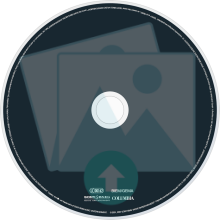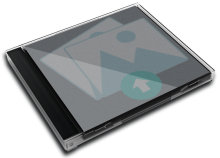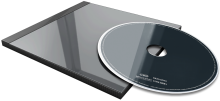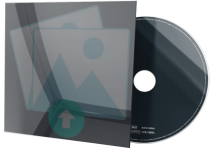
Cover NOT yet available in
Join up for 4K upload/download access
Your Rating (Click a star below)
![]()
![]()
![]()
![]()
![]()
![]()
![]()
![]()
![]()
![]()
Track List
01) Blister in the Sun
02) Rudie Can't Fail
03) Mirror in the Bathroom
04) Under Pressure
05) I Can See Clearly Now
06) Live and Let Die
07) We Care a Lot
08) Pressure Drop
09) Absolute Beginners
10) Armagideon Time
11) Matador
12) Let My Love Open the Door (E. Cola mix)
13) Blister 2000
01) Blister in the Sun
02) Rudie Can't Fail
03) Mirror in the Bathroom
04) Under Pressure
05) I Can See Clearly Now
06) Live and Let Die
07) We Care a Lot
08) Pressure Drop
09) Absolute Beginners
10) Armagideon Time
11) Matador
12) Let My Love Open the Door (E. Cola mix)
13) Blister 2000
2:09
3:31
3:09
4:03
2:46
3:02
4:03
4:18
2:50
3:53
4:34
4:58
2:57
Data Complete 30%
Total Rating
Total Rating
![]() (0 users)
(0 users)
Back Cover![]()
CD Art
3D Case
3D Thumb
3D Flat
3D Face
3D Spine
First Released
![]() 1997
1997
![]() ---
---
![]() ---
---
![]() ---
---
![]() ---
---
![]() ---
---
![]() Soundtrack
Soundtrack
![]() 0 copies
0 copies
Album Description
Available in:
Director George Armitage's Grosse Pointe Blank (which probably should be called John Cusack's Grosse Pointe Blank, since he not only starred in it, but also co-wrote and co-produced it) is set at a ten-year high-school reunion in Grosse Pointe, MI, in the present day, that being the spring of 1996. Thus, ex-Clash member Joe Strummer, credited with the original score, could call upon music dating back to the mid-'80s for songs the characters, now in their late twenties, would know. You might expect, then, that those 1986 graduates would be grooving to, say, Heart's "These Dreams" or "Greatest Love of All" by Whitney Houston. But, of course, Cusack and Strummer are much too hip for such popular fare. Instead, they put together a collection of edgy, British-oriented new wave and alternative rock, mostly from the early and mid-'80s, tracks by the likes of the Clash, the English Beat, the Specials, and the Jam, plus Americans Violent Femmes and Faith No More. Then there are ringers like Johnny Nash's "I Can See Clearly Now," which was a hit in 1972 when the main characters would have been about three years old, and Guns N' Roses' version of "Live and Let Die," which wasn't a hit until 1991. Okay, so this isn't really the music that would have been popular with the 1986 graduating class in Grosse Pointe. Who cares? The soundtrack album works well, including a relaxed "remix" (actually a different version) of Pete Townshend's "Let My Love Open the Door" as well as a new take on Violent Femmes' "Blister in the Sun" called "Blister 2000." Like the movie, which grossed 28 million dollars, the soundtrack album was a modest success, peaking at number 31, which inspired a follow-up collection, More Music From the Film Grosse Pointe Blank.

User Album Review
None...
External Album Reviews
None...
User Comments


Available in:
Director George Armitage's Grosse Pointe Blank (which probably should be called John Cusack's Grosse Pointe Blank, since he not only starred in it, but also co-wrote and co-produced it) is set at a ten-year high-school reunion in Grosse Pointe, MI, in the present day, that being the spring of 1996. Thus, ex-Clash member Joe Strummer, credited with the original score, could call upon music dating back to the mid-'80s for songs the characters, now in their late twenties, would know. You might expect, then, that those 1986 graduates would be grooving to, say, Heart's "These Dreams" or "Greatest Love of All" by Whitney Houston. But, of course, Cusack and Strummer are much too hip for such popular fare. Instead, they put together a collection of edgy, British-oriented new wave and alternative rock, mostly from the early and mid-'80s, tracks by the likes of the Clash, the English Beat, the Specials, and the Jam, plus Americans Violent Femmes and Faith No More. Then there are ringers like Johnny Nash's "I Can See Clearly Now," which was a hit in 1972 when the main characters would have been about three years old, and Guns N' Roses' version of "Live and Let Die," which wasn't a hit until 1991. Okay, so this isn't really the music that would have been popular with the 1986 graduating class in Grosse Pointe. Who cares? The soundtrack album works well, including a relaxed "remix" (actually a different version) of Pete Townshend's "Let My Love Open the Door" as well as a new take on Violent Femmes' "Blister in the Sun" called "Blister 2000." Like the movie, which grossed 28 million dollars, the soundtrack album was a modest success, peaking at number 31, which inspired a follow-up collection, More Music From the Film Grosse Pointe Blank.
User Album Review
None...
External Album Reviews
None...
User Comments

No comments yet...

